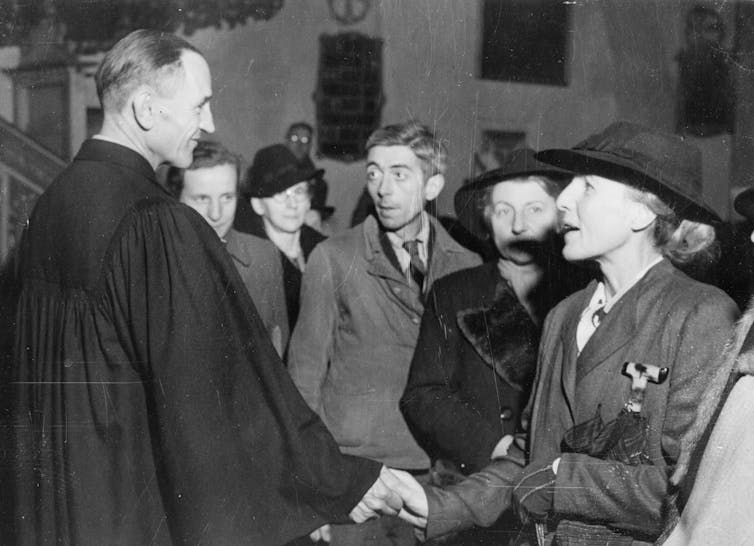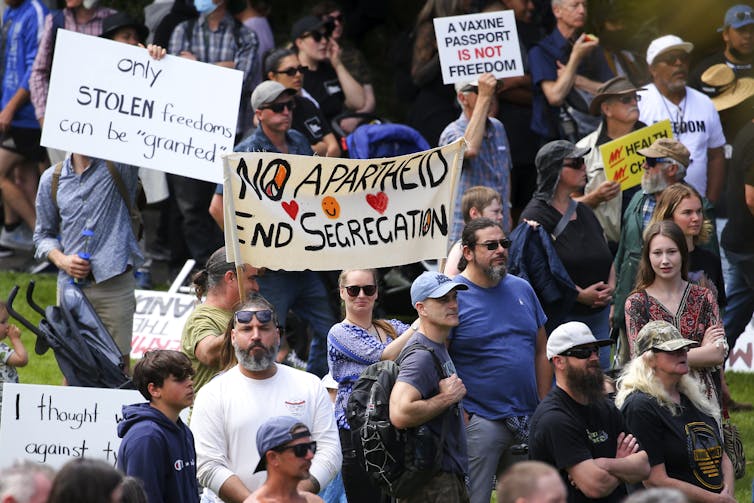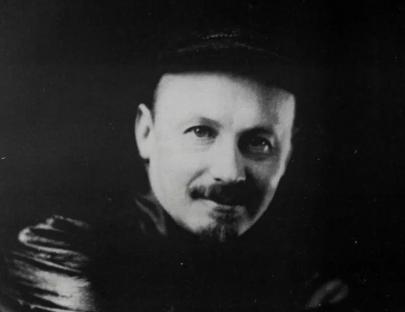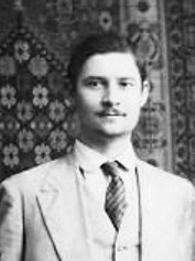Belarus Issues Dire World War III Warning as It Gets Ready to Send Troops to Ukraine
Barbie Latza Nadeau, Jamie Ross, Shannon Vavra
The Daily Beast
Mon., February 28, 2022

Valentyn Ogirenko/Reuters
The Putin-backed president of Belarus has warned that World War III could be about to begin as he reportedly prepares his troops to assist with Russia’s mass-scale invasion of Ukraine.
President Alexander Lukashenko warned that the crisis in Ukraine could spark a global conflict, writing in a statement: “Russia is being pushed towards a third world war. We should be very reserved and steer clear of it. Because nuclear war is the end of everything.”
Despite the dire warning, the increasingly rogue leader—who allowed Russia to amass its military hardware and launch an attack from his side of the border—is expected to send troops into Ukraine, according to The Washington Post, citing an unnamed Biden administration official who said, “It’s very clear Minsk is now an extension of the Kremlin.”

Umit Bektas/Reuters
The threat of Belarus joining the invasion cast a shadow over Monday’s peace talks which began on the Belarus border town of Gobel shortly before 1 p.m. local time.
The talks, which were not attended by Ukraine President Volodymyr Zelensky or Russian President Vladimir Putin, were assisted by Russian-Israeli billionaire Roman Abramovich, who owns Chelsea Football Club. Abramovich attended at the request of Ukraine, according to the Jerusalem Post, which cites his close ties to close ties to the Jewish communities in Russia and Ukraine, of which Zelensky is part.
Ukraine’s first request was an immediate ceasefire, which was denied as bullets and missiles continued to rain down across the country, especially in Kharkiv, which was came under heavy cluster bomb attacks Monday afternoon, according to CNN. On social media, several Western journalists posted images too gruesome to repost of an elderly woman whose devastating wounds that blew off her legs eventually proved fatal.
Belarusian Foreign Minister Vladimir Makei opened the session with a message meant to clam nerves. “Dear friends, the President of Belarus asked me to welcome you and to provide everything for your work, as agreed with President Zelensky and President Putin,” he said. “You may feel completely safe here. This is our sacred duty.”
Lukashenko had called Zelensky on Sunday and offered to guarantee his safety if he should attend the peace summit on the Ukraine border with Belarus, saying he would take “responsibility for ensuring that all planes, helicopters and missiles stationed on the Belarusian territory will remain on the ground during the Ukrainian delegation's travel, meeting and return.”

Vitaliy Gnidyi/Reuters
Zelensky declined the offer, choosing instead to continue fighting off Russian troops in the capital city of Kyiv where heavy fighting seemed to calm down overnight with the Russian military opening a safe corridor for Ukrainian civilians to leave the capital city after the end of a weekend-long curfew. Instead many lined up for food and other supplies to hunker back down or stay to protect their city.
Heavy fighting continued elsewhere, including the cities of Chernihiv and Kharkiv, which European and British defense ministries confirm is still under Ukrainian control despite heavy losses. Ukraine’s defense ministry confirmed Monday that dozens had been killed and hundreds injured after brutal Russian fire power.
Russian forces have instead reportedly secured the Black Sea city of Berdyansk and the city of Kherson near Crimea. NATO head Jens Stoltenberg tweeted on Monday that NATO partners are “providing Ukraine with air-defence missiles and anti-tank weapons.”
In Mariupol, which has seen some of the deadliest fighting, a 6-year-old girl in unicorn pajamas died after being hit by Russian firepower. The doctor who tried to save her told an Associated Press crew, “Show this to Putin. The eyes of this child, and crying doctors.”
Ukraine’s defense ministry was also bolstered by intense interest in its “International Legion” of foreign fighters. After putting out a call over the weekend for any foreign nationals to come join the fight to protect Ukraine, the ministry said it received “thousands” of messages from people who wished to help.

Alexander Ermochenko/Reuters
The Russian military has been hit with a series of setbacks, even admitting they had suffered casualties against the scrappier and smaller Ukrainian military for the first time. “The Russian occupiers have reduced the pace of the offensive, but are still trying to develop success in some areas in the offensive against Ukraine,” Ukraine’s Cabinet of Ministers posted Twitter Monday.
In recent days, Russians have had to resort to drawing on their fuel and logistics supplies “earlier” than U.S. officials think they planned to, because of Ukrainian resistance the official said. In their own version of events, Russia claimed control over Ukraine's airspace. “Russian aviation has gained air supremacy over the entire territory of Ukraine,” Russian Ministry of Defense spokesman Igor Konashenkov said in a statement.
The senior defense official pushed back on that idea, telling reporters Monday that airspace is still contested in Ukraine. The Russians also haven’t successfully taken the cities of Kharkiv or Mariupol, the official said, adding that Ukrainians are putting up “stiff and determined resistance” in those cities.
There are not yet indications Belarus forces are in Ukraine, the senior U.S. defense official said Monday.
As the fighting rages, over 400,000 Ukrainians—mostly women and children—have left the country with many crossing into Poland. Men between the ages of 18 and 60 are prohibited from leaving the country.
Mon., February 28, 2022

Valentyn Ogirenko/Reuters
The Putin-backed president of Belarus has warned that World War III could be about to begin as he reportedly prepares his troops to assist with Russia’s mass-scale invasion of Ukraine.
President Alexander Lukashenko warned that the crisis in Ukraine could spark a global conflict, writing in a statement: “Russia is being pushed towards a third world war. We should be very reserved and steer clear of it. Because nuclear war is the end of everything.”
Despite the dire warning, the increasingly rogue leader—who allowed Russia to amass its military hardware and launch an attack from his side of the border—is expected to send troops into Ukraine, according to The Washington Post, citing an unnamed Biden administration official who said, “It’s very clear Minsk is now an extension of the Kremlin.”

Umit Bektas/Reuters
The threat of Belarus joining the invasion cast a shadow over Monday’s peace talks which began on the Belarus border town of Gobel shortly before 1 p.m. local time.
The talks, which were not attended by Ukraine President Volodymyr Zelensky or Russian President Vladimir Putin, were assisted by Russian-Israeli billionaire Roman Abramovich, who owns Chelsea Football Club. Abramovich attended at the request of Ukraine, according to the Jerusalem Post, which cites his close ties to close ties to the Jewish communities in Russia and Ukraine, of which Zelensky is part.
Ukraine’s first request was an immediate ceasefire, which was denied as bullets and missiles continued to rain down across the country, especially in Kharkiv, which was came under heavy cluster bomb attacks Monday afternoon, according to CNN. On social media, several Western journalists posted images too gruesome to repost of an elderly woman whose devastating wounds that blew off her legs eventually proved fatal.
Belarusian Foreign Minister Vladimir Makei opened the session with a message meant to clam nerves. “Dear friends, the President of Belarus asked me to welcome you and to provide everything for your work, as agreed with President Zelensky and President Putin,” he said. “You may feel completely safe here. This is our sacred duty.”
Lukashenko had called Zelensky on Sunday and offered to guarantee his safety if he should attend the peace summit on the Ukraine border with Belarus, saying he would take “responsibility for ensuring that all planes, helicopters and missiles stationed on the Belarusian territory will remain on the ground during the Ukrainian delegation's travel, meeting and return.”

Vitaliy Gnidyi/Reuters
Zelensky declined the offer, choosing instead to continue fighting off Russian troops in the capital city of Kyiv where heavy fighting seemed to calm down overnight with the Russian military opening a safe corridor for Ukrainian civilians to leave the capital city after the end of a weekend-long curfew. Instead many lined up for food and other supplies to hunker back down or stay to protect their city.
Heavy fighting continued elsewhere, including the cities of Chernihiv and Kharkiv, which European and British defense ministries confirm is still under Ukrainian control despite heavy losses. Ukraine’s defense ministry confirmed Monday that dozens had been killed and hundreds injured after brutal Russian fire power.
Russian forces have instead reportedly secured the Black Sea city of Berdyansk and the city of Kherson near Crimea. NATO head Jens Stoltenberg tweeted on Monday that NATO partners are “providing Ukraine with air-defence missiles and anti-tank weapons.”
In Mariupol, which has seen some of the deadliest fighting, a 6-year-old girl in unicorn pajamas died after being hit by Russian firepower. The doctor who tried to save her told an Associated Press crew, “Show this to Putin. The eyes of this child, and crying doctors.”
Ukraine’s defense ministry was also bolstered by intense interest in its “International Legion” of foreign fighters. After putting out a call over the weekend for any foreign nationals to come join the fight to protect Ukraine, the ministry said it received “thousands” of messages from people who wished to help.

Alexander Ermochenko/Reuters
The Russian military has been hit with a series of setbacks, even admitting they had suffered casualties against the scrappier and smaller Ukrainian military for the first time. “The Russian occupiers have reduced the pace of the offensive, but are still trying to develop success in some areas in the offensive against Ukraine,” Ukraine’s Cabinet of Ministers posted Twitter Monday.
In recent days, Russians have had to resort to drawing on their fuel and logistics supplies “earlier” than U.S. officials think they planned to, because of Ukrainian resistance the official said. In their own version of events, Russia claimed control over Ukraine's airspace. “Russian aviation has gained air supremacy over the entire territory of Ukraine,” Russian Ministry of Defense spokesman Igor Konashenkov said in a statement.
The senior defense official pushed back on that idea, telling reporters Monday that airspace is still contested in Ukraine. The Russians also haven’t successfully taken the cities of Kharkiv or Mariupol, the official said, adding that Ukrainians are putting up “stiff and determined resistance” in those cities.
There are not yet indications Belarus forces are in Ukraine, the senior U.S. defense official said Monday.
As the fighting rages, over 400,000 Ukrainians—mostly women and children—have left the country with many crossing into Poland. Men between the ages of 18 and 60 are prohibited from leaving the country.










 Khrystiuk was a Central Committee member of the million strong Ukrainian Party of Socialist Revolutionaries (UPSR) and a deputy in the autonomous parliament the Central Rada, he held positions in the Ukrainian Peoples Republic and later he worked for the Society of Scientific and Technical Workers for the Promotion of Socialist Construction Kharkiv. A publisher of several studies Khrystiuk was arrested in 1931 and perished in the Stalinist terror in a in a Soviet
Khrystiuk was a Central Committee member of the million strong Ukrainian Party of Socialist Revolutionaries (UPSR) and a deputy in the autonomous parliament the Central Rada, he held positions in the Ukrainian Peoples Republic and later he worked for the Society of Scientific and Technical Workers for the Promotion of Socialist Construction Kharkiv. A publisher of several studies Khrystiuk was arrested in 1931 and perished in the Stalinist terror in a in a Soviet 

